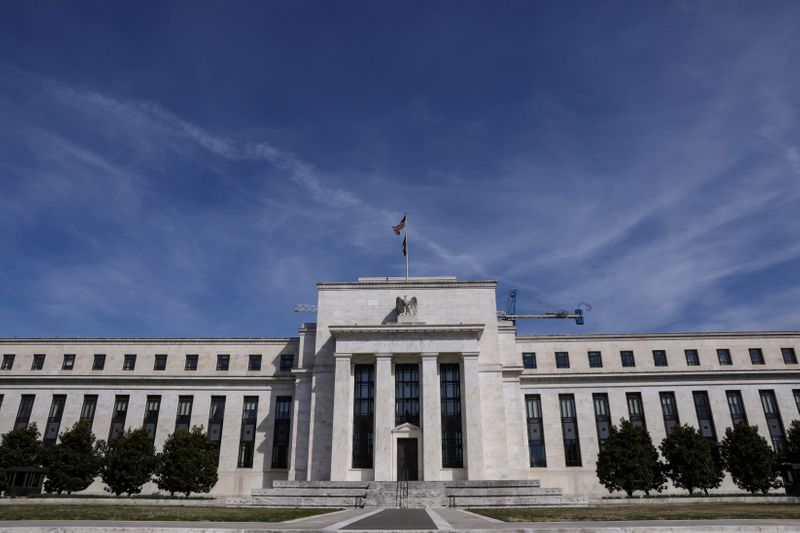
FILE PHOTO: The Federal Reserve Board building on Constitution Avenue is pictured in Washington, U.S., March 27, 2019. REUTERS/Brendan McDermid
April 29, 2020
By Gertrude Chavez-Dreyfuss
NEW YORK (Reuters) – The Federal Reserve is widely expected on Wednesday to lift the interest rates that influence its fed funds target, a technical move that could keep interbank lending running smoothly and help prevent financial market disruption should the benchmark rate fall below zero.
The effective fed funds rate dropped as low as 0.04% twice in the past week. That matched the level set in December 2011, two years after the economy emerged from the last recession, heightening concerns among some investors that it could go negative for the first time in the wake of the Fed’s aggressive moves to limit market damage from the coronavirus outbreak.
The fed funds rate declined despite the $1.35 trillion in Treasury bills brought to the market in the past four weeks, as low rates on repurchase agreements and depressed yields on Treasury bills resulted in more inflows into the fed funds market.
“The markets are nervous that the effective fed funds rate goes negative. I don’t think it will happen,” said Gennadiy Goldberg, senior rates strategist at TD Securities in New York.
“Given everything that’s going on, this is the last thing the Fed wants to focus on. They don’t want to seem like that they have lost control of their target rate.”
A negative effective fed funds rate would imply that banks are willing to pay to lend funds overnight to each other, and indicate the market expects the Fed to take interest rates below zero.
Fed officials have said they oppose negative rates for the United States. They have had mixed results overseas and were once considered only for economies with chronically low inflation such as Europe and Japan.
Investors do not expect further interest rate easing when the Fed’s monetary policy committee meeting ends on Wednesday.
They do, however, expect the Fed to raise the overnight reverse repurchase rate (RRP) to 0.05% from 0%, which serves as a floor for the effective fed funds rate, currently in a target range of 0%-0.25%.
The RRP is also the rate the Fed pays non-bank institutions which leave cash at the Fed collateralized with Treasuries.
In tandem with the RRP, the Fed will likely lift the interest rate it pays banks for excess reserves (IOER) parked at the central bank by 0.05% to 0.15%, keeping the spread with the repo rate at 10 basis points.
Raising the IOER tends to encourage banks to demand higher rates when they lend money in the federal funds market.
The last time the Fed raised the IOER was during the January meeting, lifting that rate to 1.6% from 1.55%.
The overnight indexed swap (OIS) curve, representing market expectations for the Fed’s daily target for the overnight lending rate, is implying an effective fed funds rate of between 8 and 9 basis points after the FOMC meeting, analysts said.
The Fed’s numerous liquidity programs have expanded its balance sheet to a record $6.6 trillion, or more than 30% of the U.S. gross domestic product. That means excess bank reserves have also ballooned to more than $3 trillion, analysts said.
“This expansion would pull the fed funds rate to the bottom of the FOMC’s target range absent an increase in the RRP rate,’ said Joseph Abate, managing director and rates strategist, at Barclays in New York.
(Reporting by Gertrude Chavez-Dreyfuss; Editing by Alden Bentley and Jonathan Oatis)

